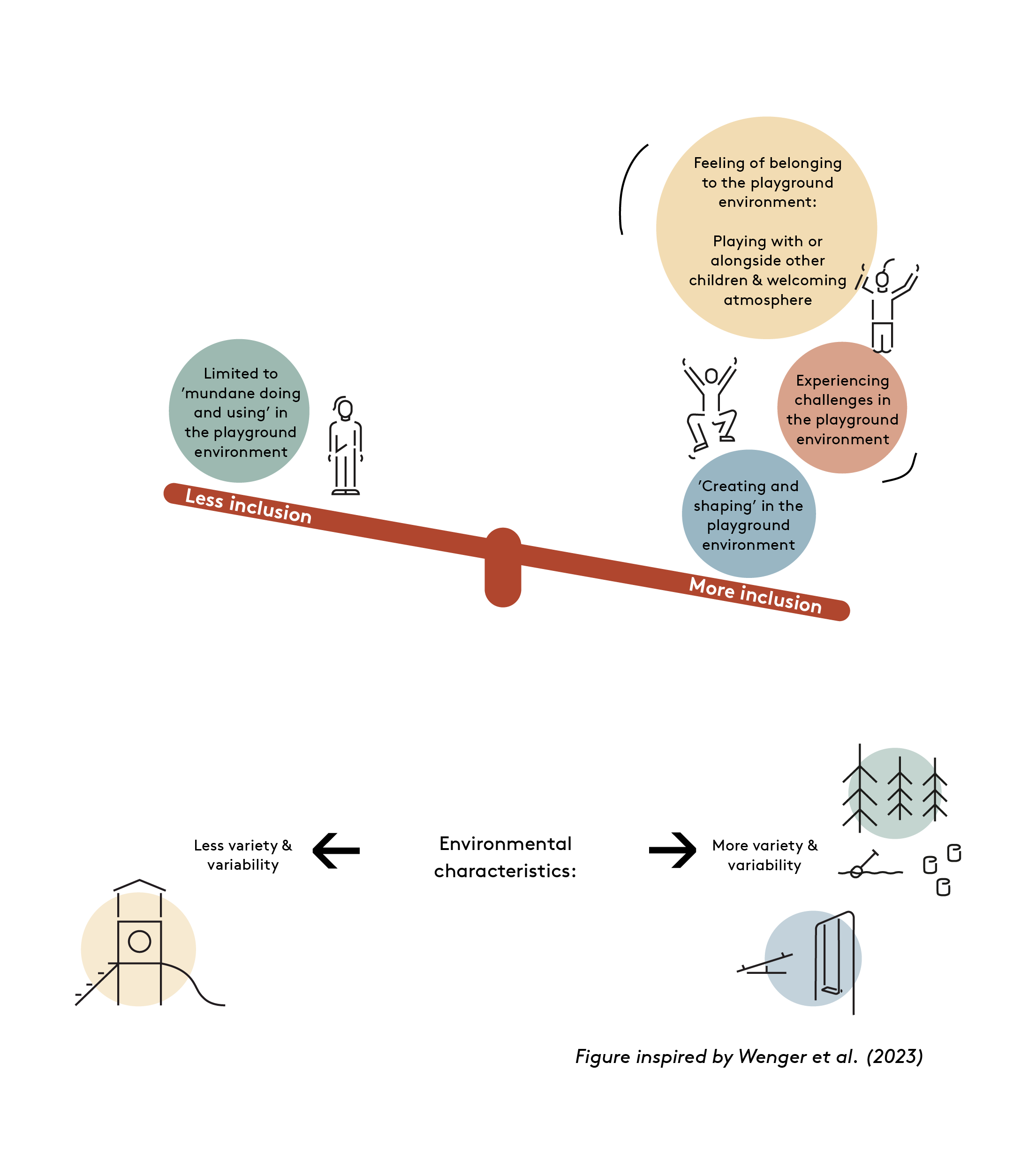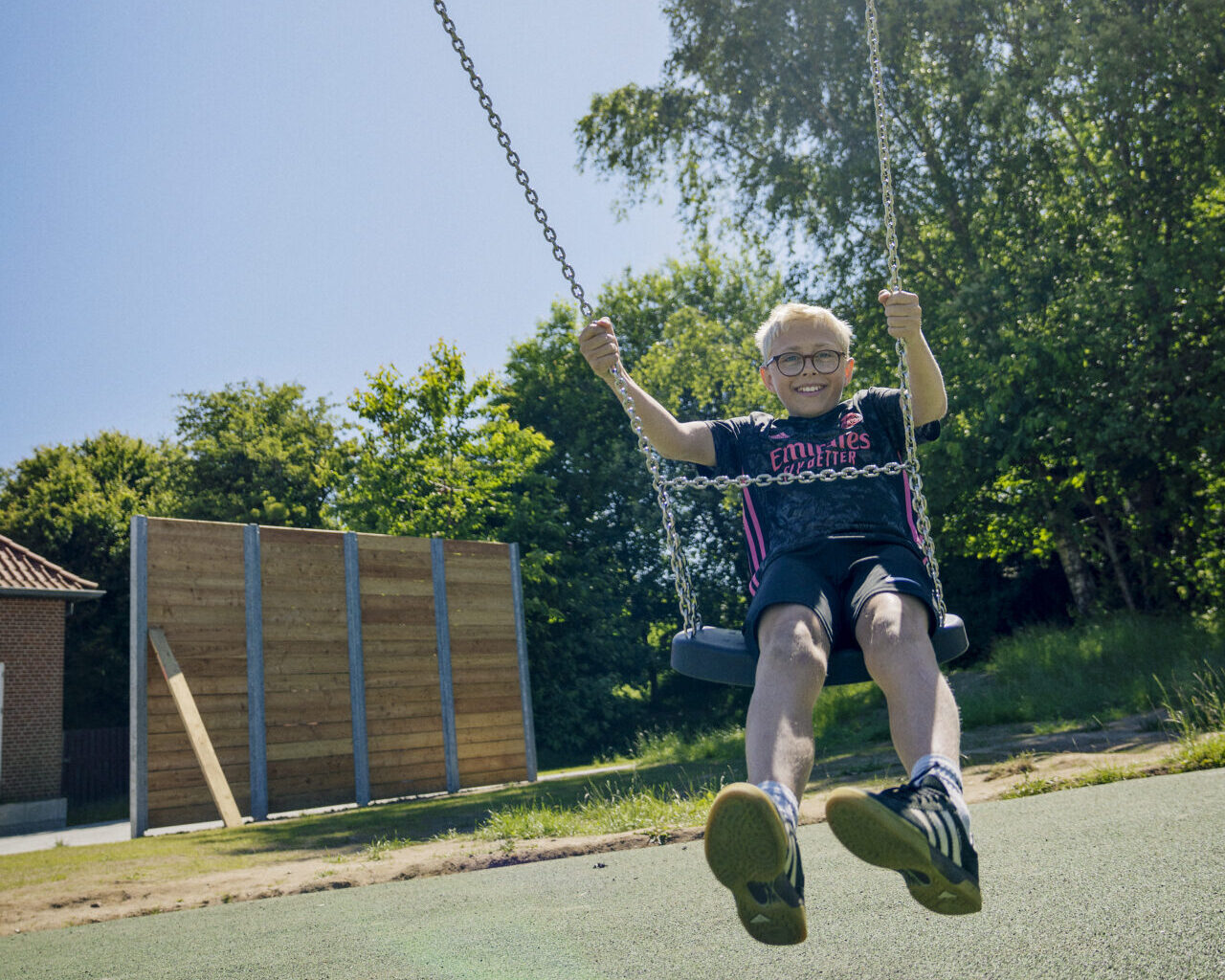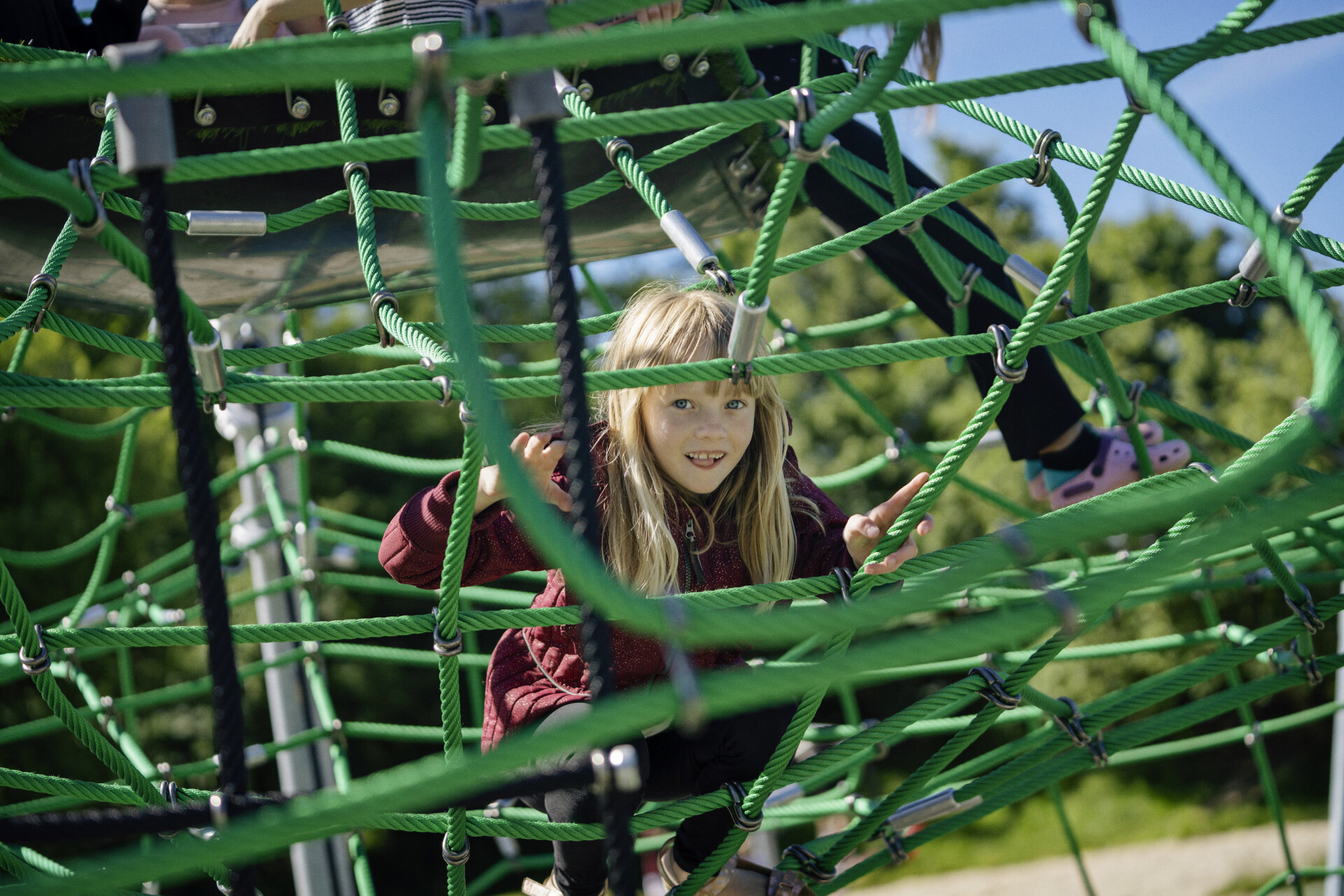
From children’s perspective: How can playgrounds contribute to play value and inclusion?
Introduction and aim
Research has shown that children’s playtime involves embracing fun challenges, mastering new skills, and enjoying the freedom to play anywhere, with anything, or with anyone. It also provides an excellent opportunity for socialization and interaction with friends.
All of these elements can be encapsulated in the concept of ‘play value’. Play value denotes the significance that children find in their playtime – it’s the depth and richness of their play experience in a specific setting.
Currently, there is limited knowledge about the specific environmental features that should be considered when designing playgrounds with high play value to meet the diverse play needs of all children.
In this brief, we showcase key findings from a meta-ethnographic study conducted in 2023, which investigated 17 studies on how children’s experiences of the environmental characteristics of outdoor playgrounds contribute to valuable insights into our comprehension of play value and inclusion from a child-centered viewpoint.
This brief is relevant for playground planners, designers, architects, as well as researchers, and professionals engaged in the planning and design of playgrounds.
Experiencing and mastering environmental and/or social challenges
Children connect play value with challenges because they find excitement and strong feelings in facing them. Mastering these fosters a deep sense of accomplishment and self-esteem, often gained through engaging in games or excelling in activities such as climbing or sliding.
Creating and shaping the physical environment
Children personalize spaces through their imagination, fostering a sense of belonging. For example, they invent their own games, like playing catch or using the playground equipment as shields.
This imaginative play helps children feel more confident and independent, shown by their ability to make choices (like controlling themselves, the environment, or interactions with adults), as well as a sense of privacy.
Playing with or alongside other children
For children, playing with or alongside other children cultivates a sense of belonging to a group or peer culture. This can be expressed through special codes or shared commonalities.
However, not every child with disabilities has the opportunity to engage in these social activities, which may lead to a limited sense of belonging.
Experiencing welcoming atmosphere
In their analysis, the authors underscore the importance of involving children in playground planning. This may facilitate a broader understanding of their needs that goes beyond equipment, including access, maintenance, and rules – all crucial for play value and inclusion.
Children recommend implementing rules for positive social interaction on playgrounds, such as no bullying, kicking, or hitting, and promoting equality among different age groups and genders. They emphasize the importance of consistently applying rules communicated in a friendly manner.
Additionally, attentive supervisors should allow risky play experiences to contribute to children’s comfort, play value, and inclusion on playgrounds.
The first theme
The study identified two themes.
The first theme outlines how children perceive play value. It encompasses their firsthand experiences and mastery of challenges, the creation and shaping of the physical environment, social interactions while playing with or alongside other children, and the sense of belonging fostered by the welcoming playground atmosphere.
It can be utilized into these four subcategories:
The second theme
The second theme illustrates how the design of a playground, considering the diversity of spaces and locations, along with the variability of both designed and non-designed elements, impacts play value and inclusion.
It includes these two components:
Designing with variety and variability to create inclusive play spaces for all children
The sense of belonging in a social setting is linked to a physical environment characterized by variety and variability.
Offering diverse spaces in a playground, including in-between areas (spaces between, on the sidelines, or in the corners of the main play areas) and open spaces (located in the center of a playground or on a field), are crucial for enhancing inclusion and play value.
Regarding inclusion, the 17 studies included in the analysis demonstrated that in-between places hold special significance for especially preschool children, children with disabilities, and girls due to their quiet nature and secluded location.
Variability of designed and non-designed elements
Natural environments in playgrounds offer a variety of play possibilities, providing numerous opportunities for play, challenges, creative use, social interaction, and variability while evoking positive and calming emotions. Children perceive natural environments as enhancing their well-being, describing them as beautiful, cozy, and relaxing.
However, children with disabilities did not mention nature when discussing playgrounds. This could indicate a need to not only consider accessibility and usability but also the provision of natural elements.
From an occupational perspective, this study contributes insights into how children, especially those with disabilities experience play occupations and the use of play environments differently than adults interpret.
I come here to cool down… under the peppermint gumtree… This is my favourite spot… because it’s shady and under the leaves… it’s fun when it’s bushy cos we can hide…
(Quote from child in Moore et al., 2019, p. 16).
Key take home message

All our briefs are accessible through our website, www.playgroundresearch.org.
On the website, you’ll find a compilation of briefs that offer a clear comprehension of research findings and their implications for future research and practical application.
You can also download a printable PDF version of this brief to facilitate sharing.
Downloads
Please click on the download link below to obtain a copy of each file
Main Editors


Similar Briefs
Projects
Explore our institute’s active engagement in developing playgrounds’ future through innovative research and current projects.
Briefs
We are dedicated to sharing valuable insights from research studies and reviews through concise and accessible publications.
Articles
Explore our article database for a comprehensive array of global research and insights, offering diverse perspectives and knowledge.
News
Stay up-to-date and engaged through the latest news, project updates, events, and activities specific to playground research.


